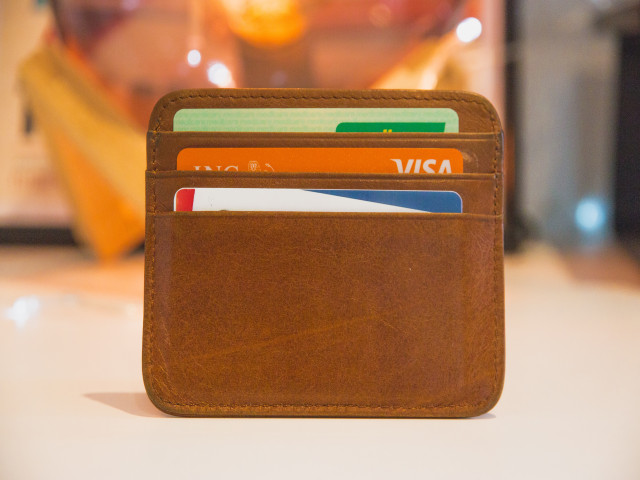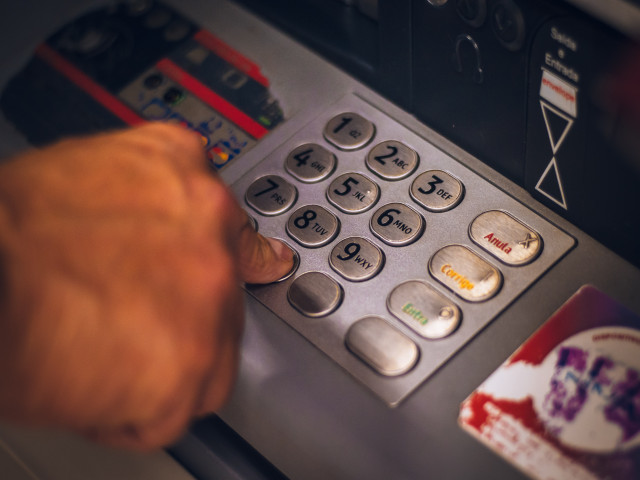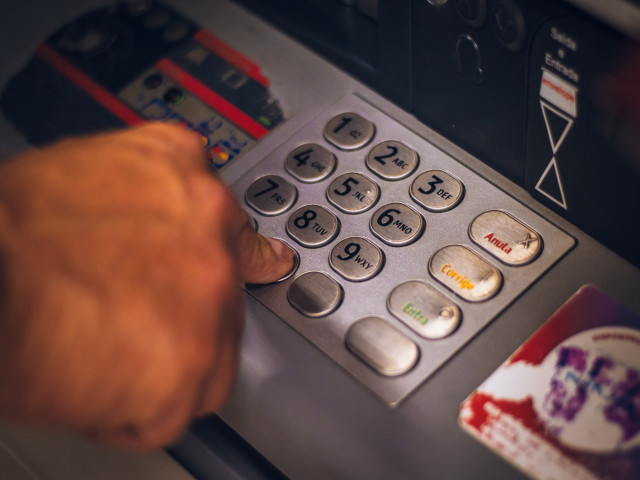17 Jan 2024
Digital Wallets Unveiled: A Closer Look at the Power of Mobile Transactions

Introduction
In an era defined by technological innovation, the landscape of financial transactions is undergoing a profound transformation. Digital wallets have emerged as powerful tools, revolutionizing the way we manage and move money. From the convenience of mobile transactions to the integration of advanced security measures, the rise of digital wallets is reshaping the traditional paradigms of finance. In this blog post, we delve into the world of digital wallets, unraveling their evolution, examining key features, and exploring the impact they have on both consumers and the financial industry.
The Evolution of Digital Wallets
The inception of digital wallets can be traced back to the late 20th century when the concept of electronic cash emerged. The early forms of digital wallets were rudimentary, primarily serving online transactions through personal computers. As technology continued to advance, so did the capabilities of digital wallets, leading to their evolution into the sophisticated systems we know today.
Historical Background
Digital wallets began to gain prominence in the early 2000s as internet usage soared. The introduction of e-commerce necessitated secure and convenient payment methods, giving rise to the development of digital wallets. Early adopters experimented with various models, including stored-value cards and online accounts, laying the foundation for the modern digital wallet ecosystem.
Technological Advancements Driving the Evolution
The evolution of digital wallets is intricately tied to technological advancements. The widespread adoption of smartphones played a pivotal role in transforming digital wallets into versatile tools. Near Field Communication (NFC) technology facilitated contactless payments, adding a new layer of convenience. Security features like biometric authentication further bolstered user confidence, addressing concerns about the safety of digital transactions.
Types of Digital Wallets: Mobile Wallets, Web Wallets, and more
The evolution of digital wallets has given rise to diverse types catering to various user preferences and needs. Mobile wallets, such as Apple Pay and Google Pay, have become ubiquitous, enabling users to make seamless transactions using their smartphones. Web wallets, on the other hand, operate through web browsers, offering flexibility for online purchases. The emergence of cryptocurrency has led to the development of digital wallets specifically designed for managing digital assets.
Key Features of Digital Wallets
Digital wallets have evolved to offer a myriad of features, transforming the way we conduct financial transactions. Understanding these key features is crucial for users seeking secure and efficient payment solutions.
Digital wallets prioritize Security Measures to safeguard user information and financial data. Advanced encryption technologies, secure sockets layer (SSL) protocols, and tokenization ensure that sensitive details are protected from unauthorized access. Biometric authentication, such as fingerprint and facial recognition, adds an extra layer of security, making it challenging for malicious actors to compromise the integrity of digital wallet transactions.
The hallmark of digital wallets lies in their Convenience and Accessibility. Users can store multiple payment methods, including credit cards, debit cards, and even loyalty cards, in a single digital wallet. This consolidation streamlines the payment process, eliminating the need to carry physical cards or remember multiple account details. Additionally, digital wallets often feature user-friendly interfaces, enabling quick and hassle-free transactions with just a few taps or clicks.
One of the standout advantages of digital wallets is their Integration with Multiple Payment Methods. Whether it's credit cards, bank accounts, or emerging payment technologies, digital wallets seamlessly integrate diverse payment methods into a unified platform. This versatility allows users to choose the most convenient and cost-effective payment option for a given transaction. The integration also extends to compatibility with various currencies, facilitating international transactions with ease.
The Impact on Traditional Banking
The advent of digital wallets has ushered in a transformative era for traditional banking institutions. As consumers increasingly embrace the convenience and efficiency of digital transactions, traditional banks are compelled to adapt their services. The impact is evident in the shift towards online banking, with many financial institutions integrating digital wallet functionalities into their platforms. This evolution reflects a changing landscape where traditional banks are compelled to enhance their digital capabilities to remain competitive in the rapidly evolving financial ecosystem.
Changing Consumer Behavior
Digital wallets have become synonymous with the changing behaviors of consumers in the modern era. The convenience of making transactions with a simple tap on a smartphone has led to a notable decrease in reliance on traditional banking methods. Consumers now seek seamless, instant, and mobile-friendly solutions, prompting a paradigm shift in their expectations from financial service providers. This shift in consumer behavior has profound implications for traditional banks, necessitating a strategic response to align with the preferences of the digital-savvy demographic.
Rise of Cashless Societies
The rise of digital wallets has contributed significantly to the emergence of cashless societies. As more transactions migrate to digital platforms, the need for physical cash diminishes. Countries and communities around the world are witnessing a decline in cash usage, with digital wallets playing a pivotal role in fostering a cashless economy. This shift not only streamlines financial transactions but also poses challenges and opportunities for traditional banks to adapt their services to the evolving payment landscape.
Challenges and Opportunities for Financial Institutions
The integration of digital wallets into the financial landscape presents both challenges and opportunities for traditional banking institutions. While the convenience of digital wallets attracts customers away from traditional banking services, it also opens avenues for innovation. Financial institutions have the opportunity to collaborate with fintech companies, leverage emerging technologies, and enhance their digital offerings to meet the evolving needs of consumers. Adapting to this digital transformation is crucial for traditional banks to remain competitive, offering a chance to redefine their roles and stay relevant in a rapidly changing financial ecosystem.

Mobile Transactions in Everyday Life
In the contemporary digital landscape, mobile transactions have seamlessly integrated into our everyday lives, revolutionizing the way we engage in financial activities. One of the most prominent arenas where mobile transactions have left an indelible mark is in the realm of Online Shopping. With the rise of e-commerce platforms, mobile devices have become virtual shopping malls at our fingertips. Digital wallets, integrated into mobile apps, facilitate swift and secure transactions, providing consumers with a seamless shopping experience. The convenience of making purchases with just a few taps on a smartphone has reshaped the retail landscape, making online shopping an integral part of our daily routines.
Peer-to-Peer Payments
Mobile transactions extend beyond the realm of commercial transactions to include interpersonal financial interactions. Peer-to-Peer Payments have gained immense popularity, allowing individuals to transfer funds effortlessly using their mobile devices. Whether it's splitting a restaurant bill, repaying a friend, or contributing to a group gift, mobile P2P payment apps have become the go-to solution. The simplicity and immediacy of these transactions have transformed the way we handle financial obligations in our personal and social circles, reducing the reliance on traditional methods such as cash or checks.
Contactless Payments at Retail Stores
The advent of contactless technology has significantly influenced the way we make payments at retail stores. Mobile transactions, particularly through the use of digital wallets, have enabled consumers to make swift and secure payments without the need for physical contact with cards or cash. Contactless Payments at Retail Stores have become the norm, with mobile devices equipped with Near Field Communication (NFC) technology facilitating quick and convenient transactions. This evolution aligns with the growing demand for hygienic payment methods, especially in the context of global health considerations, making mobile transactions a safer and preferred option for many consumers.
FAQs
Q: Are digital wallets secure for storing sensitive information?
A: Yes, digital wallets employ advanced encryption and security features to safeguard your sensitive information, making them a secure option for storing digital cash.
Q: Can I use digital wallets for international transactions?
A: Many digital wallets support international transactions, providing a convenient and secure way to make payments across borders.
Q: How do rewards and cashbacks work in digital wallets?
A: Digital wallets offer rewards and cashback incentives based on your transaction history. These can be redeemed for discounts, vouchers, or even direct cashback.
Q: What role do cryptocurrencies play in digital wallets?
A: Cryptocurrencies in digital wallets provide an alternative form of currency, offering decentralization and increased security in transactions.
Q: How can digital wallets contribute to reducing the carbon footprint?
A: By promoting a cashless society, digital wallets reduce the need for physical currency production and circulation, contributing to environmental sustainability.
Q: What educational resources are available for understanding digital wallets?
A: Many digital wallet providers offer educational resources on their platforms, including tutorials, articles, and FAQs to help users understand and utilize their services effectively.
Conclusion
As we conclude our exploration of digital wallets, it becomes evident that these digital marvels are not merely tools for transactions; they represent a fundamental shift in the way we perceive and interact with money. The amalgamation of convenience, security, and accessibility has given rise to a financial landscape that is more inclusive and dynamic than ever before. As we stand at the cusp of a cashless future, the power of mobile transactions through digital wallets beckons us to embrace a new era in finance. The journey may have just begun, but the potential and promise it holds are boundless. It's time to unlock the full potential of digital wallets and embark on a path towards a more connected and efficient financial ecosystem.
RELATED POST
https://dollardirect.cc/admin/frontend/frontend-element/blog/137














